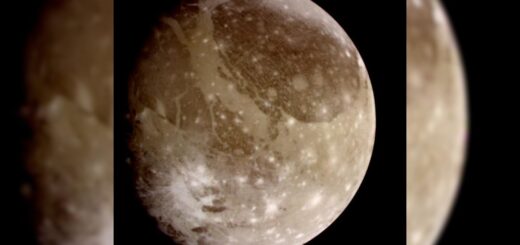Where Did THAT Come From? Hubble Discovers Galactic Neighbor Bedin 1

This trio of images shows the location of the accidentally discovered dwarf galaxy Bedin 1 behind the globular cluster NGC 6752. The upper left image highlights the part of the cluster containing the galaxy Bedin 1. The upper right image shows the full field of view of the NASA/ESA Hubble Space Telescope. The big center image depicts the complete cluster and is a ground-based observation from the Digitized Sky Survey 2. ESA/HUBBLE, NASA, BEDIN ET AL., DIGITIZED SKY SURVEY 2
Galaxies: Big, bright and really hard to miss. However, not all galaxies fit into this stereotype — some are a little more understated, hidden or just plain shy, which explains why the Hubble Space Telescope found an entire galaxy hanging out on our cosmic doorstep, a mere 30 million light-years away. Sure, that may sound like a long way away, but over intergalactic scales, that’s like finding a tree in your backyard that you didn’t realize you had.
Though it might be difficult to imagine, astronomers stumbled on this galaxy by accident. While studying the ancient white dwarf stars in the bright globular cluster NGC 6752, in an effort to gain an accurate measure of the cluster’s age, they noticed something amiss in the background. The cluster is located only 13,000 light-years away in our Milky Way galaxy in the direction of the constellation Pavo, but while checking out the cluster, astronomers noted a dense collection of fainter stars well beyond NGC 6752. And after carefully measuring the brightness and temperature of the background stars, they realized they had found something special – an entire galaxy that was hidden by the glare of NGC 6752.
The astronomers nicknamed the galaxy Bedin 1, and their study has been published in Monthly Notices of the Royal Astronomical Society: Letters.
So, what do we know about our new galactic neighbor? For starters, it’s small. Granted, galaxies are anything but “small,” but compared to our absolute unit of a galaxy, Bedin 1 is a featherweight. Measuring only 3,000 light-years wide, Bedin 1 is a fraction of the size of the Milky Way (our galaxy is at least 100,000 light-years wide). Needless to say, Bedin 1 is also quite faint, which led the astronomers to classify it as a dwarf spheroidal galaxy. Dwarf spheroidals are galaxies that are in retirement; the star formation party is over, and the stars that they do have are old and dim. They’re also fairly common in our Local Group of galaxies – we know of 36 galaxies of this type and 22 of them are in orbit around our galaxy!
Although it’s a common type of tiny galaxy, according to the study, Bedin 1 does have some special attributes. For starters, it’s a loner. It’s located 30 million light-years from the Milky Way and at least 2 million light-years away from the nearest large galaxy, NGC 6744. It’s thought that Bedin 1 is the most isolated dwarf galaxy known to exist. Its stars are also old, like really old, revealing that the galaxy is as ancient as the universe itself – approximately 13 billion years old. A Hubble statement likens Bedin 1 to “the astronomical equivalent of a living fossil from the early Universe.”
Accidentally stumbling across a nearby galaxy gives astronomers a hint that there may be many more galaxies of this type out there, just waiting to be found behind the nearest star cluster. As telescopes on the ground and in space become more sophisticated, it seems highly likely that it’s only a matter of time before more nearby cosmic fossils are dug up.



 Creators of mankind
Creators of mankind Description of “Tall white aliens”
Description of “Tall white aliens” Where they came from?
Where they came from? About hostile civilizations
About hostile civilizations The war for the Earth
The war for the Earth “Tall white aliens” about eternal life
“Tall white aliens” about eternal life Video: “Nordic aliens”
Video: “Nordic aliens” Aliens
Aliens Alien encounters
Alien encounters The aliens base
The aliens base UFO
UFO Technology UFO
Technology UFO Underground civilization
Underground civilization Ancient alien artifacts
Ancient alien artifacts Military and UFO
Military and UFO Mysteries and hypotheses
Mysteries and hypotheses Scientific facts
Scientific facts


















